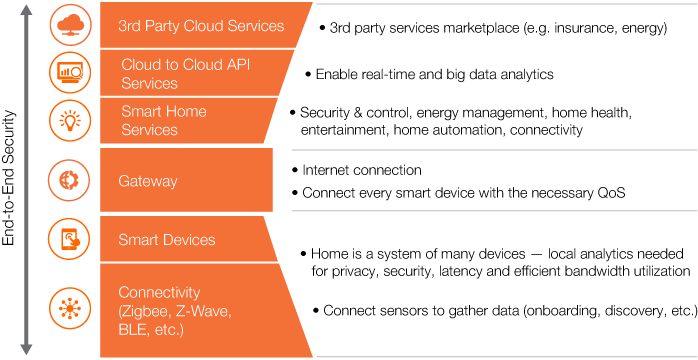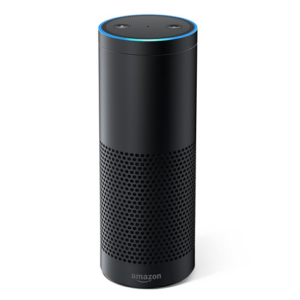- Services
Technology Capabilities
Technology Capabilities- Product Strategy & Experience DesignDefine software-driven value chains, create purposeful interactions, and develop new segments and offerings.
- Digital Business TransformationAdvance your digital transformation journey.
- Intelligence EngineeringLeverage data and AI to transform products, operations, and outcomes.
- Software Product EngineeringCreate high-value products faster with AI-powered and human-driven engineering.
- Technology ModernizationTackle technology modernization with approaches that reduce risk and maximize impact.
- Embedded Engineering & IT/OT TransformationDevelop embedded software and hardware. Build IoT and IT/OT solutions.
- Industries
- GlobalLogic VelocityAI
- Insights
BlogsDecember 16, 2024Gene LeybzonAccelerating Digital Transformation with Structured AI Outputs
This code produces the following output that can be imported into the candidate trackin...
 BlogsOctober 30, 2024Yuriy Yuzifovich
BlogsOctober 30, 2024Yuriy YuzifovichAccelerating Enterprise Value with AI
Discover how financial services integrations are transforming from standalone offerings...

- About Us
Press ReleaseGlobalLogicMarch 11, 2025GlobalLogic Launches VelocityAI to Harness the Power of AI, ...
VelocityAI combines advanced AI technologies with human expertise, helping businesses r...
 Press ReleaseGlobalLogicJanuary 10, 2025
Press ReleaseGlobalLogicJanuary 10, 2025GlobalLogic Announces Leadership Change: Srini Shankar Appointed ...
SANTA CLARA, Calif.–January 10, 2025– GlobalLogic Inc., a Hitachi Group Com...

- Careers
Published on February 7, 2023The Smart Home Finally Comes Home
View all articlesVitalii VashchukShareRelated Content GlobalLogic25 June 2025
GlobalLogic25 June 2025 GlobalLogic25 June 2025View All Insights
GlobalLogic25 June 2025View All Insights GlobalLogic25 June 2025
GlobalLogic25 June 2025Let's start engineering impact together
GlobalLogic provides unique experience and expertise at the intersection of data, design, and engineering.
Get in touchAnalyticsCloud Based Platform EcosystemsGenAICross-IndustryThese days, a modern home will have an array of smart gadgets, from automatic garage doors that close at a specific time every night to internet-connected devices that are programmed to set the temperature or adjust the lighting in homes. These advanced products give connected users remote access to control and respond to real-time events through a phone app or various forms of voice control, making it easier to keep homes organized.What has contributed to the increasing popularity of these innovative technologies is how accessible, affordable and mainstream they are becoming, giving households a choice of options that reflect their budgets. However, one only needs to look back a few years to understand the extent of growth in American smart home trends.
In 2018, smart home statistics show approximately 29.5 million households were using smart home devices. While between 2021 to 2022, American households saw a 6.7% increase in smart home devices, with about 57.4 million homes actively using smart home devices. And by 2025, this figure is expected to reach 64.1 million households.
These figures indicate that smart home trends are here to stay, and as we progress into the future, they will develop an even stronger presence. The problem now for consumers is navigating the wide variety of products and selecting the best products for their homes. Before diving into trending smart products, let’s first look at why smart technology is so popular.
Why are Smart Products Popular?
Internet-connected devices characterize smart products, often including home automation or domotics, which allow users to control and monitor their connected devices remotely to suit their lifestyles.
The key to why smart products are so popular is the automation technology that allows connected devices to perform everyday tasks like turning off lights when a room is empty. Below, we will highlight some key benefits of why smart products are so popular:
- Added convenience and comfort: With a simple swipe, tap, or voice command, users can use smart devices to manage everyday tasks according to a user’s preferences.
- Increased safety and security: Installing smart home security systems, such as sensors that detect human activities, provides protection when unwanted intruders are detected, automatically notifying local law enforcement. It is prevalent for users to connect their homes with smart security before going on vacation, giving them peace of mind while away.
- Improved accessibility: Intuitive smart products also allows for improved accessibility. Smart features, like voice command, allow hands-free experiences, which is practical for the elderly or those with limited mobility. The connected devices improve their quality of life, giving them added convenience and ease.
- More efficiency and savings: Smart devices, like smart heating and cooling systems, are considerably more energy efficient and can save a household up to 50% in energy bills. When connected with smartphone apps, users can monitor and track their energy usage, regulating the temperature of their homes to their preferences while saving on their energy bills.
Recommended reading: The Economics of Digital Transformation [Whitepaper]
Current Smart Home Trends
Now that we understand why smart devices are popular, let’s look at current smart home trends. The current smart home device market is growing at an impressive pace. In 2021, the global smart device market was valued at US$84.52 billion with an annual growth rate of 10.4%. However, by 2022, the market has grown to US$115.70 billion with an 13.97% CAGR increase. While by 2026, the market is expected to surpass US$195.20 billion.
While there is already a wide array of established smart home brands, new companies are also entering the market. With so many choices, knowing which products are reliable can be difficult. Therefore, below we have highlighted some leading companies in the smart home automation market:
- Amazon Inc (Echo Dot with clock): This is a clever, smart device that can be integrated with various Amazon products and apps like Spotify, Apple Music, and YouTube. Besides displaying the time, the device also displays the weather and song titles. Additionally, it has a motion sensor, temperature sensors, a timer, and improved audio, making it a popular innovative product in connected homes.
- Apple Inc (HomeKit): The Apple HomeKit is another popular product range because it allows users to control their smart home accessories quickly and conveniently. Users can control lights, security, and room temperature from their connected devices with color-coordinated icons, making it easier to view and manage different rooms in the house.
- Google LLC (Nest Hub): The Nest Hub has now been integrated into the Google Store, making it easier for users to manage their smart home products. There is a wide array of smart products, including audio, home security, and video entertainment, so users can mix and match the products to create the perfect balance of connected devices.
- Samsung (SmartThings Hub): Connected devices to Samsung SmartThings allows users to perform an array of activities, such as controlling the lights, preheating the oven, planning family meals, and checking the front door, all with a single tap. The product is compatible with Android and iOS devices, making it convenient for users to program their preferred automation.
- LG Electronics (LG ThinQ): Similar to Samsung SmartThings, LG ThinQ is also compatible with Android and iOS devices. It can also be integrated with various services, including Google Assistant and Amazon Alexa, making it convenient for users to purchase different products. Additionally, it can be programmed to set helpful tips, such as reminding users to clean their washer drains or to change the refrigerator’s filters. All users need is an internet connection to monitor and manage their devices remotely.
- ABB Ltd (Smart Home Solutions): Smart Home Solutions are controlled via connected devices so users can personalize their automation for blinds, lighting, heating, air-conditioning, and door communication. ABB is known for its energy-efficient products, making it a popular choice for those who want to purchase sustainable products.
- General Electric (Smart Appliances): Connecting to General Electric’s smart products via the SmartHQ app allows users to program various automation, such as laundry and meal planning. Users can also set helpful alerts and push notifications and use their voice via Amazon Alexa to control connected devices for various smart appliances partnered with General Electric, including Bose, Sonos, Hey Google, and Amazon Alexa.
- Siemens AG (LOGO!): LOGO is a compact controller with a cloud interface that is easy to program. Known for its versatility, it gives users access to the Internet of Things (IoT) to manage and maintain different automation devices.
All the companies above are well-established with innovative home automation products that allow users to access and manage their homes remotely via a mobile device. Additionally, some semi-vertical SW platforms enable users to mix and match different smart devices, offering more flexibility while staying connected and in complete control. Some of these companies and smart products include:
- Meta (Portal): Meta Portal is a video calling device that allows users to connect via Zoom with other apps. It has a built-in smart camera, which adjusts automatically when a user moves to widen the view automatically, keeping everyone in sight. The portal also has Alexa built-in, so users can ask questions, set a timer, and add items to their shopping lists.
- Xiaomi (Mijia Smart Steam Oven): This steam oven is popular with users because there are a variety of cooking modes, including steam and fry options. It also heats and cooks food fast and has five cleaning modes.
- Baidu (DuerOS): DuerOS products have been embedded with AI speech and image recognition technology, making them popular devices for users to command and converse. The smart products have also been integrated with various appliances, such as Bluetooth speakers and home appliances, like television sets and home telephones, so users can use voice commands to control and operate the devices.
- Tencent-Midea Smart Home Appliances: Tencent and Midea have joined forces to produce more interactive devices, improving the user experience with better coverage for all smart home appliances. Midea devices are compatible with Amazon Alexa and Hey Google, making it easier for users to control and monitor their homes.
- AT&T (Digital Life): This is a digital home security and automation tool that users can connect via their PC, smartphone, or tablet. It is a popular product because users can also set up the service, even when moving to a new home.
- Comcast (XFINITY Home): XFINITY Home provides 24/7 home security with video recording. The XFINITY smart camera devices have built-in sensors to detect motion, which are programmed to trigger the Kwikset Smart Lock, giving users peace of mind when they are away from home.
Smart home devices have already penetrated our daily lives, with the connected home being a foundation for collecting and sharing home data. On one end of the spectrum are the sensors and devices that collect data and provide user interfaces, and on the other are the local and remote cloud services and analytics that add intelligence and value. The internet gateway is at the core of this connection of devices and services, while a layer of security spans the entire ecosystem.

End to end components of smart home ecosystem<span style="font-size: 16px"> </span> Recommended reading: Security for the Internet of Things [Whitepaper]
Voice is the Natural UI for the Smart Home
As a design-led engineering company, GlobalLogic has accumulated tremendous experience driving smart home automation for various global customers, from startups to technology leaders. From our experience, we’ve found that mobile application interfaces are a great tool, making it easier and more natural to communicate and receive feedback by voice while at home.
Speaking to a device with AI that understands you and can execute your commands elevates the experience to another level. According to Juniper research, in 2019, the global use of chatbots was valued at 586 million in 2019. However, by 2030, it is expected to reach 7 billion. At the same time, voice assistants like Amazon Alexa have also gained traction, with Alexa holding 62% of the global market.
This calls for product leaders at technology and service providers to invest and improve the voice interfaces, focusing more on personal home assistants and, ultimately, voice-controlled smart products, which can be integrated into the home.
A fantastic example is Amazon Alexa. Alexa drives voice-enabled control of smart home devices (among other skills). After years of development, Siri, Google Now, and Cortana are other sophisticated personal assistant technologies inspiring the smart home ecosystem.
We see many iterations around smart home voice-enabled functions. For example, Mark Zuckerberg has even created a home automation system called Jarvis, which Morgan Freeman voices. The Javis system has an array of features allowing Zuckerberg to control everything in the house, including lights, music, lights, and temperature, all via voice control. It also has a textbot connected to registered devices, allowing users to control devices via text.
A fun fact about Jarvis. It is named after Tony Stark’s artificially intelligent computer J.A.R.V.I.S. in Iron Man, which stands for Just A Rather Very Intelligent System.

Amazon Echo with Alexa voice assistant While there is momentum, hurdles remain
AI is an essential part of this human-machine interaction. Consider that even simple functions, such as switching on and off the lights, might be challenging considering all the ways the command could be given—“Shut off the light in the back bedroom” vs. “Turn off the lamp in the kids’ room”.
Teaching your smart home assistant to understand different linguistic nuances is essential for a smooth consumer experience. That’s where voice biometrics and intelligence come into play. You should be able to say, “Play my favorite song,” and have your smart home assistant recognize your voice and your preferences.
Consider also the possibility of combining a shopping service, like Amazon Prime Now, Amazon Echo, and a smart stove, and you can see how the complexity of commands can quickly escalate—“I want to order the ingredients for fettuccine alfredo for four people. I already have the butter and garlic. Deliver it today before 6 p.m. Start to boil the water 5 minutes before it’s delivered.”
Developers can work with the Alexa Skills Kit to add AI capabilities of understanding the human voice instead of developing their own proprietary AI to support a smart home ecosystem.
To realize the opportunities of the smart home, the leading players will need to collaborate and form partnerships to ensure disparate devices and services connect in the background to meet that all-important desire for simplicity. Currently, there is a focus on the “big picture” benefit of the smart home, while steps are being taken to convert the smart home from a “good to have” to an “essential to have.”
Ultimately, security and safety are the primary concerns that must be addressed as smart home technologies evolve. For example, smart home voice commands may activate security-related functions. Still, they will require sophisticated recognition technologies to ensure a recorded voice cannot be used to activate these commands.
Soon we’ll all have a chance to be like Iron Man with our own Jarvis or “Star Trek computer” on board to manage home, car, and day-to-day activities.
Learn more:
